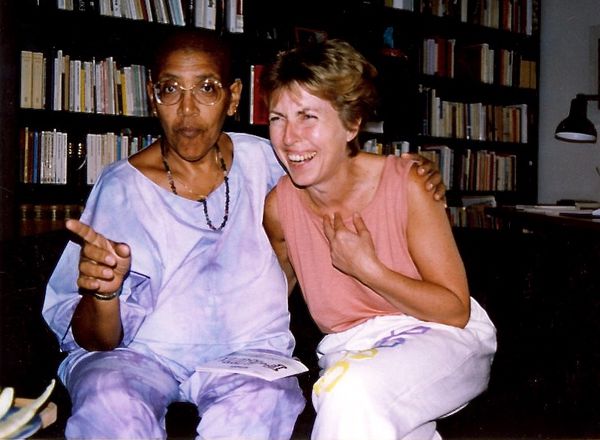

She was the only black person in her class in the 1980s. Katharina Oguntoye moved to Berlin in 1982 to get her Abitur (the high school diploma in Germany qualifying students for university) at the Kreuzberg School for Adult Education. At the same time, Oguntoye began to be politically engaged in the emerging environmental movement, and later also in the women’s movement. Her previous time in Nigeria was essential for her to distinguish between foreign external ascriptions and her own images. Oguntoye describes her youth in Heidelberg as not easy in view of the fact that few other Afro-Germans lived there.

Oguntoye’s brother stayed with their father. Two years later, in 1967, the Biafran War broke out so Oguntoye returned with her mother to her aunt’s hometown of Heidelberg in Germany. Oguntoye got to know her father’s side of the family there. Her mother joined him a year later with Oguntoye and her younger brother and they lived on the university campus. Oguntoye’s father returned to Nigeria in 1965 to take up a professorship. According to statements from Oguntoye her mother met her father at the University of Leipzig, where he was studying with the help of a scholarship from the German Democratic Republic. Katharina Oguntoye grew up in Leipzig, Heidelberg and in Nigeria. Oguntoye has played an important role in the Afro-German Movement. The English translation of this book was entitled Showing Our Colors: Afro-German Women Speak Out.

She founded the nonprofit intercultural association Joliba in Germany and is perhaps best known for co-editing the book Farbe bekennen with May Ayim (then May Opitz) and Dagmar Schultz. Katharina Oguntoye (born January 1959 in Zwickau, East Germany) is an Afro-German writer, historian, activist, and poet.


 0 kommentar(er)
0 kommentar(er)
